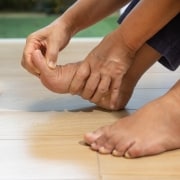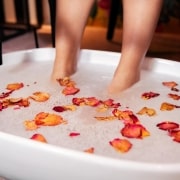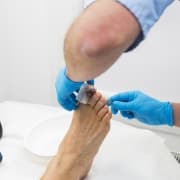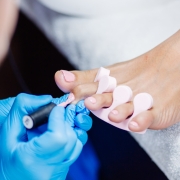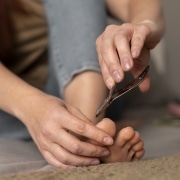5 Tips to Avoid Ingrown Toenails
Ingrown toenails is a condition where the top of the nail grows downward, into the flesh of the toe, rather than above it. Not only is this condition unsightly, but it can also be quite painful, requiring the services of apodiatrist in Austin, TX. The treatment for an ingrown toenail can be quite straightforward, depending upon how early it’s detected and treated. However, left untreated, the problem can become quite serious. As with other things, prevention is always easier. Here are X tips to avoid ingrown toenails in the first place.
1. Trim Toenails Regularly
Don’t allow your toenails to become inordinately long. They shouldn’t really extend very far past the tip of your toe. At no time should they rub against the inside of the toe portion of your shoe. This kind of chronic rubbing can turn the toenail downward, possibly leading to an ingrown toenail.
2. Trim Toenails Properly
Even the way you sculpt your toenails is important. They should be trimmed with a very slight rounded edge. There should not be an excessively sharp edge or an excessively rounded edge. Finally, avoid trimming toenails too short, which can increase the chances of the nail growing into the surrounding tissue.
3. Keep Feet Clean and Dry
Fungal infections can cause the toenails to thicken, which makes them more likely to become ingrown. Keeping your feet clean and dry reduces the risk of infections that can complicate the condition of your toenails. After washing, thoroughly dry your feet, paying special attention to the spaces between your toes.
4. Examine Toenails Regularly
Many people simply don’t pay enough attention to their feet. Apart from any desire to make sure they look attractive, you should regularly examine your toenails to avoid developing problems. If you notice that nails are growing downward, contact your podiatrist right away. There may be an underlying reason for this condition.
5. Avoid Toe Trauma
Wear footwear whenever it makes sense. Going barefoot increases the likelihood of foot trauma, which can lead to ingrown toenails. Even something so simple as stubbing your toe or dropping something heavy on your foot can cause an issue.
If you need treatment foringrown toenails in Austin, TX, contact your podiatrist at Jeffrey LaMour. We offer ingrown toenail treatment so you can get back on your feet again.






